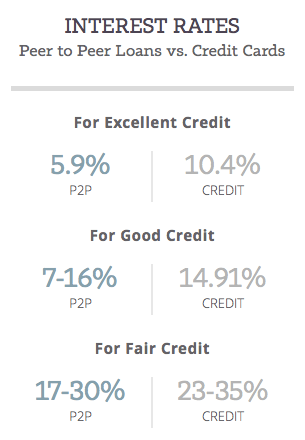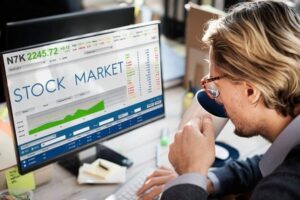Содержание

M. Keynes-to expect full employment is to accept our troubles away. Theory of creation examines the conduct of makers with their connection to the ideal portion of resources. It comprises of considering factors of production, creation capacities, cost investigation, the law of production. It additionally incorporates linear programming, a scientific procedure of cost minimization, or yield expansion. Microeconomics expects that all amounts of resources are given and it tries to clarify how they are assigned to the creation of different products.
Microeconomic theories explain various conditions of cost like fixed cost, variable cost, average cost, and marginal cost. The study of microeconomics helps the decision makers to analyze and determine how the productive resources are allocated for various goods and services. It also helps in solving the producers’ dilemma of what to produce, how much to produce and for whom to produce.

Therefore, it attempts to deal with aggregate issues of recession and prosperity, growth or stagflation, and price level stability. Macroeconomics in terms of scope is both science and art, both positive and normative science. The word ‘scope’ refers to the range or area covered by anything or any subject or by any topic. Thus, considering this point the term scope of macroeconomics means the topics or issues that are covered by macroeconomics.
Even if the price goes up, you will most likely keep buying them. Businesses often strive to sell products or services that are, or seem, inelastic in demand because doing so can mean that few customers will be lost if they raise prices. Microeconomics should not be confused with macroeconomics, which is the study of economy-wide things such as growth, inflation and unemployment. With the advent of globalisation and cross-border integration, economic concepts are applied in order to conduct successful business dealings between countries.
Conversely, if the price decreases, the number of goods or Java offered will also decrease. This analysis is then carried out on all matters relating to the cost of producing goods and services on the market. The combination of factors that occur in microeconomics needs to be determined by producers in order to get maximum profit. Micro-economics is also called price theory because under it with the equilibrium of the demand and supply curve individual price of different commodities is determined.
Microeconomics applies a range of research methods, depending on the question being studied and the behaviors involved. Microeconomics is the study of a particular unit rather than all the units combined. Microeconomics focuses on the actions and behaviors of households and businesses. Microeconomics shows the basic flow of money, goods, services, and resources. Demand in a certain market decreases because the price level of a product has increased.
Different economic patterns or variables affecting the industries include the GDP, job rates and conditions, revenue, banking, and pricing policies. Business activities also result in societal costs like deforestation and land degradation. The government carries out clear laws and legislation to regulate such social expenses. These regulations serve as a barrier for business organizations. The fiscal and monetary policies system depends entirely on the analysis of the widely held macroeconomic conditions in the nation. The Reserve Bank is establishing monetary policy in coordination with the Government.
Solution of contemporary micro-economic problems
This definition captures the idea that the cost of something is not just its monetary cost but also the value given up. Economic concepts are used to analyse the utilisation and depletion of natural resources. Moreover, they are applied to study the impact of increasing ecological imbalance on society. Unemployment – The unemployment rate caused by various factors like rising wages, a shortfall in vacancies, etc are measured under this. Positive science studies but does not provide a valuable evaluation of the relationship between two variables. Therefore, the scope, issues, or areas covered by macroeconomics can be explained with the help of the following points.
The term ‘micro’ is derived from the Greek word ‘mikros’ which refers to ‘small’. The topics covered in microeconomics refer to the interaction of households and businesses. The main topics are supply and demand, equilibrium, competition, profit maximization, and opportunity cost. In price theory, it is usually carried out in the process of price formation, the factors that can affect changes in supply and demand in the market.
The https://1investing.in/ of problems like unemployment in India, the general price level, or the disequilibrium in the balance of payment is a part of the macroeconomic study. The theory of production talks about the performance of manufacturers or producers and how they allocate available limited resources to produce certain commodities. It consists of studying factors of production, production functions, cost analysis, and the law of production.
Theory of factor pricing
Economics is classified into two broad categories – microeconomics and macroeconomics. Microeconomics deals with individual units like the consumer or a household and macroeconomics deals with an economy as a whole. The understanding of this science is vast and at different lengths. The actors who make offers are producers, where the higher the price, the higher the number of bids.
Economics Defined with Types, Indicators, and Systems – Investopedia
Economics Defined with Types, Indicators, and Systems.
Posted: Tue, 07 Nov 2017 17:55:50 GMT [source]
Keynes General Theory of Employment, Interest, and Money in 1936. The definition of microeconomics is a special study of economics to study the behavior of consumers and a company and determine market prices and quantities of inputs, goods and services to be traded. Microeconomics is also referred to as microeconomics which can directly affect decision making about supply and demand for goods or services. The study of individual units or individual consumers, individual firms or their small group form the scope of micro-economics.
Production Theory
things are included in scope of microeconomics is concerned with demand analysis i.e. individual consumer behavior, and supply analysis i.e. individual producer behavior. The Marshallian and Walrasian methods fall under the larger umbrella of neoclassical microeconomics. The knowledge of micro-economics is indispensable to know the working of the economy. The analysis of individual industries, wages and salary determination, individual taxes, international trade all rests on micro-economic foundations. Similarly, most of the government activities can be analyzed with same concepts applied to private sector. As for example, price determination by post office, cost of national defense etc. are analyzed by using micro-economics.
- This theory refers to the religious behavior of consumers in the context of meeting a need.
- It does not study the aggregates relating to the whole economy.
- Marginal analysis is an examination of the additional benefits of an activity when compared with the additional costs of that activity.
Broadly speaking, the scope of microeconomics covers the following topic. Microeconomics is the study of what is likely to happen when individuals make choices in response to changes in incentives, prices, resources, and/or methods of production. Individual actors are often grouped into microeconomic subgroups, such as buyers, sellers, and business owners. These groups create the supply and demand for resources, using money and interest rates as a pricing mechanism for coordination. Micro-economics is applied to analyses problems faced b business executives. The price theory in the service of business executives is known as managerial economics.
Become a Subject Expert in Economics
Many theories are involved to explain the causes of different phases of the business cycle. In other words, microeconomics analyses individual consumer’s and firms’ market behavior in an attempt to understand their decision-making processes. The scope of macroeconomics is really wide as it has a multi-dimensional approach to various aspects of the economy. It covers a vast range of subject matters like inflation & deflation, income & employment, growth and development of the nation, public finance, general price level, and much more.
Also, he has to choose the technology that minimizes his cost for the production of a commodity. A consumer is an important economic unit in the context of microeconomics. He has to use his resources on the purchase of different goods in a such a manner that he can maximize his satisfaction. Economists have developed the Theory of Consumer Behavior or Theory of demand to study the behavior of a producer.

These models attempt to isolate individual variables and determine causal relationships or at least strong correlative relationships. Economists disagree about the efficacy of these models, but they are widely used as good heuristic devices. Microeconomics studies how the prices of goods and services are determined in the market.
It deals with- how individual businesses decide how much to produce and at what price to sell it and how individual consumers decide on how much of something to buy. The nature and scope of macroeconomics are dynamic, that is it copes with the changes in the economy. It is one of the effective tools of macroeconomics that helps ensure a country’s economic stability. It refers to how the expenditure meets the deficit income, which explains itself as a form of budget decision under the scope of macroeconomics. So now, we understand that macroeconomics is a specialized field of Economics. It focuses on the economy through the aggregate of the individual units to determine a large impact on the complete nation.
For example, fixed expense and variable cost, normal expense and minimal cost, short and long-run cost. “Microeconomic analysis offers a detailed treatment of individual decisions about particular commodities.” Micro economics explain operating of a free enterprise economy where individual has freedom to take his own economic decisions. According to Prof. K. E. Boulding, “Micro Economics is the study of particular firm, particular household, individual prices, wages, incomes, individual industries and particular commodities.” Under its principles of production like the law of returns to scale, cost of production, and the optimum combination of factors are studied. Enotes World is an online study portal where you find different study materials on different content.

Marginal analysis is an examination of the additional benefits of an activity when compared with the additional costs of that activity. Companies use marginal analysis as to help them maximize their potential profits. Behavioral Economics is the study of psychology as it relates to the economic decision-making processes of individuals and institutions. Microeconomists formulate various types of models based on logic and observed human behavior and test the models against real-world observations.
He profitable assets are rare in the economy and microeconomics tells how gainful assets are designated in the creation of different products and enterprises. It likewise assists with discovering, what to create, the amount to deliver, and for whom to deliver. Its destinations are to lay down the procedure by which rare/limited resources or factors of production are dispensed among proficient employments.



